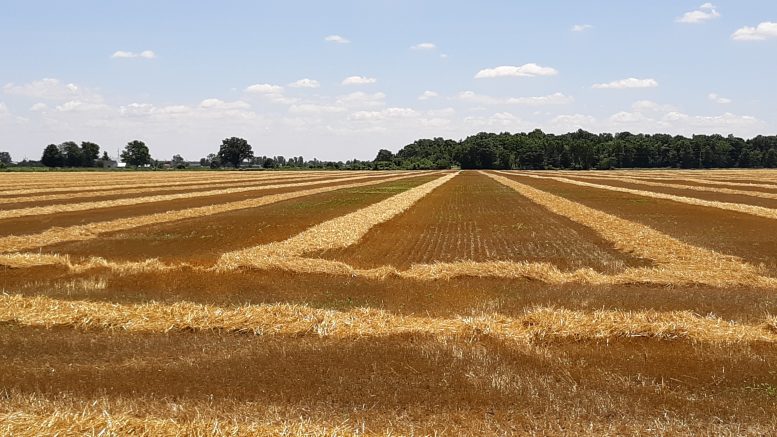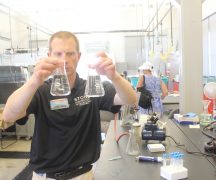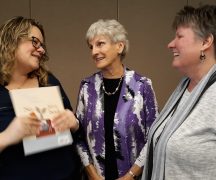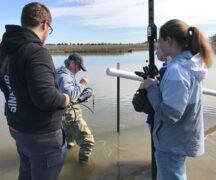By JAN LARSON McLAUGHLIN
BG Independent News
The bulk of the harmful algal blooms in Lake Erie has been planted at the feet of farmers. But the U.S. Department of Agriculture’s researcher Dr. Kevin King is still trying to get the numbers to add up.
King spoke last month to the Bowling Green Kiwanis Club about “finding the balance between sacred cows and sacrificial lambs.”
Northwest Ohio’s big water issue used to be draining it from farm fields. Now the focus is on water quality, possibly affected by runoff from those fields.
“We do know it’s related to phosphorus,” King said of the algal blooms in the Western Lake Erie Basin. “But we don’t know why it’s going up.”
King stressed that he isn’t holding agriculture blameless in the problem.
“I’m not giving agriculture a pass by any means,” he said. “There’s a lot farmers can do and should be doing.”
King’s problem is that the numbers just don’t add up.
This region’s clay soil often results in the phosphorus placed on the fields making its way into ditches, and eventually to Lake Erie.
“We’ve got 14,000 miles of ag ditches in the Western Lake Erie Basin,” he said.
But researchers have found those fields lose about 2% to 5% of the phosphorus on an annual basis.
“That is our conundrum,” he said. Even at the high end of 5%, that isn’t enough to explain the current problems. Plus, some waterways are developing harmful algal blooms, even though there is no access from agricultural land.
“We don’t know from a scientific community what is causing this,” he said.
“There is still a lot of finger pointing going on in the state,” King said. “We’ve all got to be willing to give a little bit.”
Some ag research points toward farming trends like tiling and no-till methods as possibly being part of the problem.
“We have very, very poor soil structure here,” King said. Natural drainage in clay soil is practically non-existent, so fields must be tiled.
Early farmers in this area dug drainage. Then about 1970, plastic tubing started being buried in fields, about every 40 to 50 feet.
“Drainage is not an option. It’s a necessity,” he said.
Tiling is not cheap – costing anywhere from $1,000 to $1,500 an acre. But the returns are worthwhile for farmers in terms of bigger yields, earlier planting, field access, and less disease.
Then in the late 1970s and 1980s, no-till farming became a trend as a way to prevent soil erosion.
But now researchers are looking at whether the plastic tiles and the no-till practices – believed to be solutions to other problems – may have unintended consequences of increasing phosphorus runoff problems.
“Farmers are doing exactly what they were told to do by the universities and research community,” King said.
Even the arrival of the zebra mussels in Lake Erie could have contributed to the problem, he said.
Meanwhile, more regulations are being put in place for agriculture.
“This has put agriculture in the crosshairs,” King said. The industry is looking at the options of dealing with phosphorus runoff in three sites – in the fields, on the edge of the fields, and in the streams.
The “4Rs” of nutrient stewardship are being encouraged on a voluntary basis. Those steps include applying the right source of fertilizer, at the right rate, at the right time, in the right place.
According to King, there are about 4 million acres of farmland in the Western Lake Erie Basin. An estimated 2 million of those acres are being farmed using the “4Rs,” he said.
“Every single producer ought to be managing their land with the ‘4Rs,’” King said.
But even if all farmers adopted those practices, that would not result in reaching the goal of a 40 percent reduction in phosphorus reaching the waterways, he said.
Other practices are being suggested as possible ways to reduce the phosphorus runoff. Those include crop rotation, cover crops, drainage water management, phosphorus removal structures, tiered drainage ditch designs, grassed furrow ditches and constructed wetlands.
“This is not done in a laboratory. This is done on working farms,” King said.





